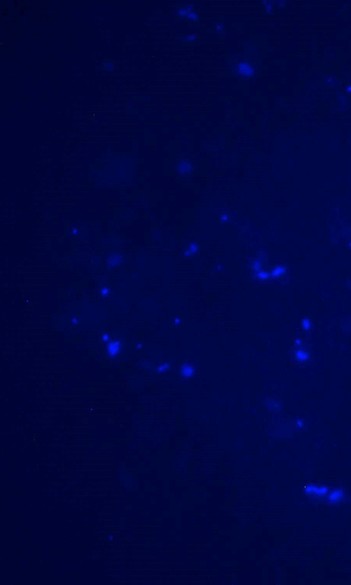The area of interest of the Department of Microbiology is environmental microbiology in its broadest sense. We answer classical (ecological) questions using traditional microbiological (cultivation-based) and newest molecular techniques. These ecological questions (what kind of microbial species occur in a given environment, what kind of activities they exert, and how they are organized into a community, while they colonize the environment), which target the fuller understanding of the world around us, are complemented with the examination of possible applications as well.
Diversity of our research is limited by methodological coherence and the fact that we focus principally on the world of bacteria.
The investigation of the microbiota of natural ecosystems is basic research. Its driving forces are the eagerness of exploration and understanding of biological diversity. Beside normal environments we seek for and analyze natural environments, in which extreme adaptations allow the subsistence of life.
1.1. Microbiology of natural aquatic habitats - special environments
The primary habitat of the microorganisms is water. In Hungary embarrassing richness of standard types of continental waters can be found, including many special types. We want to get to know extensively as much as possible from them.
1.2. Microbiology of terrestrial habitats
Exploration of microbial communities of terrestrial habitats had been at the center of basic research earlier at the Department. Today we primarily work with soils in the frame of applied questions.
1.3. Animal-microbe interactions
All animals create habitat for other live organisms merely by the fact, that their surface can be colonized, their metabolites enable or inhibit the growth of other organisms. The analysis of animal-microbe interactions is particularly important because of the human-microbe interactions.
1.4. Plant-microbe interactions
1.5. Fungus-microbe interactions
The diverse eukaryotic microorganisms comprising "Fungi" have well explored pathogenic/parasitic and beneficial interactions with other eukaryotes, mainly with plants. However, the analysis of cooperation between prokaryotes and fungi has just begun. (
Balázs Vajna)
There is a clear need in the environmental microbiological analysis toward the development and application of novel methods, which are able to answer our questions more precisely. Moreover at the application of new methods it is a basic requirement to analyze their reliability, accuracy and errors. Ideally the need for new procedures combined with high fidelity leads to innovations, interesting for the community of microbiologists, biologists.
2.1. Classical and modern phenotypical methods
The cultivation, i.e. the study of growth and reproduction of microorganisms, is one of the basic methods in microbiology, which serves the species description, either. Searching for new methods is one of the most important tasks in environmental microbiology, similarly.
2.2. Methods based on nucleic acids
The majority of cultivation-independent methods used in environmental microbiology, based on community nucleic acid extraction, analysis of genes bearing phylogenetic information, were adapted from diagnostic microbiology. The optimal application and biases of these methods have to be examined. Our department has analyzed biases concerning distortion of community structure at multitemplate PCR, DGGE and clone-libraries.
2.3. Respirometry-based methods
Studying the characteristic compounds building up microbial cells gives us information not only on their taxonomic position but refers to their activity, too. The development and incredible sensitivity of analytical (chemical) methods create new opportunities for microbiology.
The methodological developments and basic research findings offer the possibility of practical application. In our case, we focus our interest on the development of microbial biotechnologies common in environmental protection.
3.1. Microbial transformation of xenobiotics
Perhaps the most numerous spills on Earth is caused by the industry producing, processing and utilizing fossil fuels, especially crude oil. Although petroleum derives from bacterial biomass, petroleum products and its derivatives are considered as pollutants. Their remediation is carried out mostly by utilizing microbial metabolism.
3.2. Wastewater treatment and composting
By the exhaustion of natural self-purification processes intensive pollution-control and -combatting techniques have been introduced. There is a constant demand to understand and improve the technologies of composting and waste water treatment. In some areas at Eötvös University, Department of Microbiology we were successfully expanding our knowledge.
3.3. Microbiology of drinking and industrial waters
In addition to the analysis of the microbiota of natural waters microbiota we consider our basic task to know drinking and industrial water from this aspect. These high purity waters are generally "germ free" or have very low germ counts based on standard microbiological testing procedures. However, using appropriate techniques, even though tens of thousands of active cells per milliliter can be detected, which not only affect the water quality and stability, but also can cause the deterioration of the water distribution systems.
3.4. Microbiology of sustainable agricultural production
According to the dual need of sustainable agricultural production (obtaining good and high yields and meanwhile using fewer chemicals) we contribute to the developments exploiting the possibilities offered by soil microbes, their interactions with plants and biological control.


